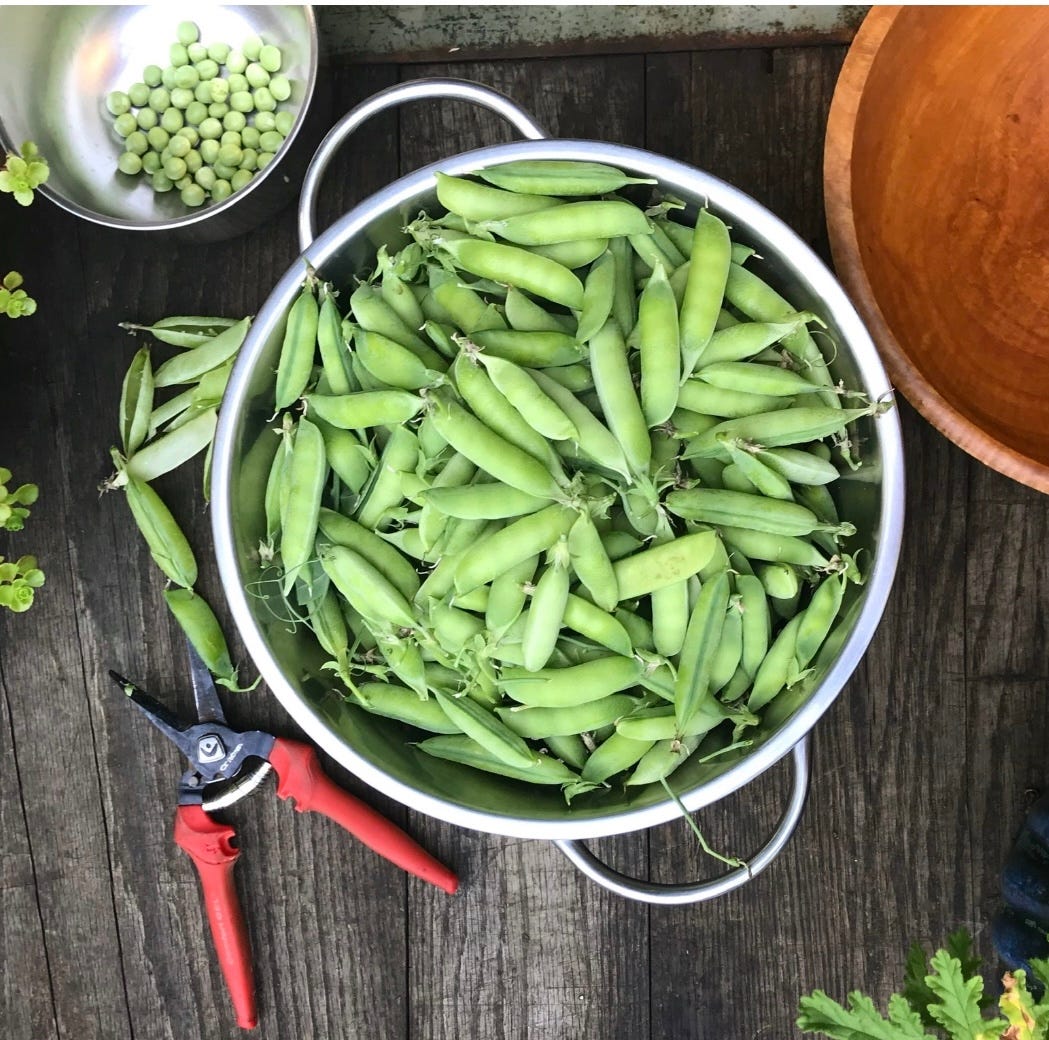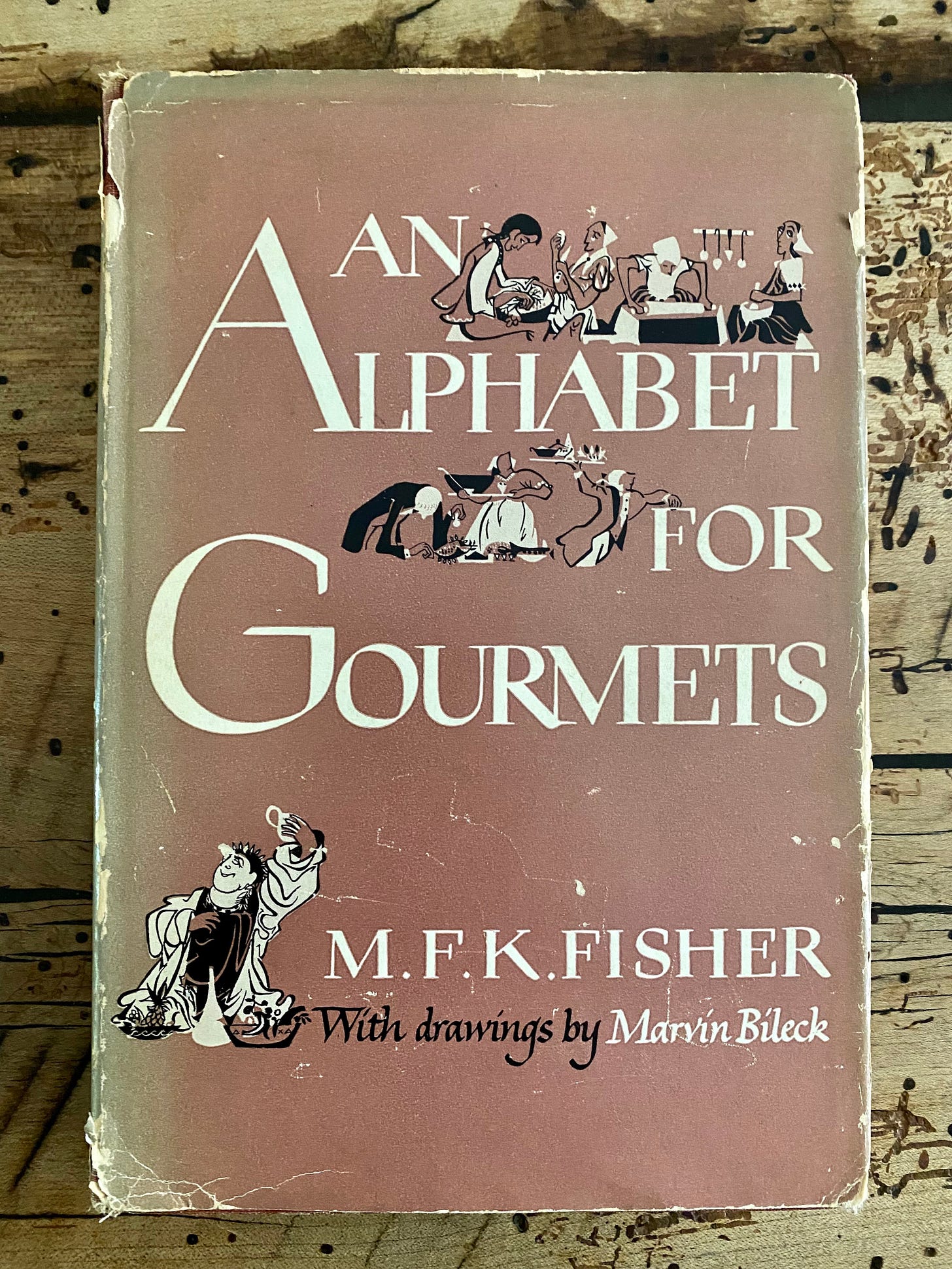It used to be that we would fight over them. Which variety to plant (English peas —Pisum sativum, var. sativum — are what I prefer, probably because the best peas I’ve ever eaten were in England). When to plant them (traditionally St. Patrick’s Day, when, in southern New England, the ground is often still frozen solid; every year, I suggest using an auger, which is overkill, or a screwdriver hammered into the ground, which feels ridiculous). When to harvest them (too soon and they’re prenatally tiny; too late and they’re all starch). How to cook them (quickly and instantly after picking and shelling them, in a shallow pan over low heat with a little water, some sweet butter, and a few sprigs of fresh mint), or whether to freeze them on sheet pans for cooking when darkness falls in autumn but you haven’t let go of summer yet.
I did not grow up in a pea-loving household; Susan did. Ours came from a can, or in an unidentifiable tan sauce frozen in a boil-in bag, and were vile. Susan’s came mostly from a can, and were part of the large collection of shelf-stable foods that her mother kept in the basement for (we used to joke ) the end times. These were quick foods, meant for ease and convenience. No shelling involved; no counting necessary.
Combined and conflated — the picking, the shelling, the cooking, the sweetness — they lodge in your memory as almost carnal pleasure, where they live until next summer.
Although no one much talks about it, counting is part of fresh pea preparation; it’s a natural, inevitable, competitive habit. You pop open one pod, and it contains five peas; another contains only three. You make note of it and wonder why, and perhaps consider it less-than. You use your thumb to swipe them out of the pod and into a bowl. You keep going until the collecting vessel is empty, and the bowl is full. And then comes the decision: what to do, what to cook, what to freeze. Whatever is done must be done instantly to retain the integrity of the legume and the sweet purity of its flavor. Combined and conflated — the picking, the shelling, the cooking, the sweetness — they lodge in your memory as almost carnal pleasure, where they live until next summer.
I am lucky to own Laurie Colwin’s copy of MFK Fisher’s An Alphabet for Gourmets; it was gifted to me by my dear friend RF Jurjevics, Laurie’s (no longer a) kid. When I took it off the shelf the other day, it fell open to P is for Peas, and the story about how the family — Mary Frances, her friends, her mother and father, and, presumably, her second husband, Dillwyn Parrish — harvested the peas that she had planted in a steep terraced garden among the vineyards between Montreux and Lausanne on the Lake of Geneva. This was the site of their house, Le Paquis, where Fisher and Parrish lived until 1939, a year after the Anschluss, and when war had broken out with the German invasion of Poland and Czechoslovakia. In the story, there is a lot of racing and running around and dashing up and down the steep terraces with baskets of freshly harvested peas until twilight, when Mary Frances brings a scant half-inch of water to boil in a large pot set over a fire, tosses in a good six quarts or more of peas. There is pine smoke and Alpen glow, a local cow shaking her bell in a slow, melodious rhythm, a kind of hymn. And small-town midwestern newspaperman Rex Kennedy, Mary Frances’ father, his fists all stained with green-pea juice, proclaiming, God, but I feel good! There is ice cold white wine of Alpen minerality, slices of ham, and Mary Frances swirling into the hot peas a big pat of butter, salt, pepper, and then running like hell up the path lined with candytuft and pinks to the table.
A parallel: the running, the dashing, the racing with baskets juxtaposed against the hymnal drone of the cow bell. All around the Fisher-Parrishes and their friends on this lovely late afternoon is the encroaching war and the impending doom, and citizens fleeing their homes; how many people at this point have already been lost? And yet: the Fisher-Parrishes methodically pick their peas, count the good ones, and race to enjoy them at the slender moment of their integrity. A day later, and the peas are cottony, inedible. Compost. This is the bucolic and the slow set against the relentless pitch of time and the inevitable threat of change and war, which will render the peaceful pugnacious, and the sweet, bitter.
So we count our days and we count our peas; this one has four, this one five, this one three. While the world spins, we busy our hands in the slowness of summertime shelling and then race to the moment of pleasure, and it’s that moment we remember most clearly.
Instructions
Pick your peas; shell and cook them immediately, not later but now, in a bit of gently simmering water (less than you think you need) until they turn bright green. Add a tablespoon of sweet butter and a pinch of salt, and give the pot a shake. After two or three minutes, turn out into a dish, and serve them with wedges of soft, mild cheese, like Teleme. If it is hot out, and it probably will be, consider this:
Summer Pea Soup
In its original form, this soup comes from Margaret Costa’s Four Seasons Cookery Book which, if you want a copy (and you should), you’ll have to buy from a used book seller (unless you’re in the UK, where it is readily available). I’ve dithered with the recipe over the years in the name of speed and simplicity (and for my vegetarian friends). Here are both the original version, and mine.
3 lbs peas
2 oz lean ham
3 large scallions
2-3 outside leaves of a large lettuce
3 pints water
salt, pepper, and sugar (to taste)
3 tablespoons thick cream
sprigs of mint
Shell the peas, cut the ham into fine strips and chop the onions. Break up the lettuce leaves roughly. Put all in a saucepan with the water, and add seasonings to taste. Simmer gently until the peas are soft. Sieve. Reheat the puree and thin it down to the right consistence with the cooking liquid (remember it will thicken a little as it cools). Lastly, stir in the cream. Cool, then chill. Serve garnished with little sprigs of mint.
Simple Summer Pea Soup
(Vegetarian)
serves 2
1 tablespoon sweet butter (or vegan butter substitute)
2 scallions, white and light green part, minced
1 outside lettuce leaf, torn into pieces
4 cups shelled (very) fresh peas
3 sprigs fresh mint, torn, plus more to garnish
4 cups water or mild vegetable stock
salt and white pepper, to taste
In a medium saucepan set over a low flame, melt the butter gently. Add the scallions and cook for three minutes until translucent. Add the lettuce leaf and give it a stir; cook until it’s wilted, about two minutes. Add the peas, the mint, and the water or stock. Bring to a simmer, and cook just until the peas are barely tender (and not a second longer), about two or three minutes. Using an immersion blender, carefully puree (or pour into a standing blender and do the same). Reheat in a medium saucepan, thinning out as needed with tablespoons of more water or stock. Season to taste. Cool, then chill. Serve cold in small bowls, with sprigs of mint.








shelling the peas